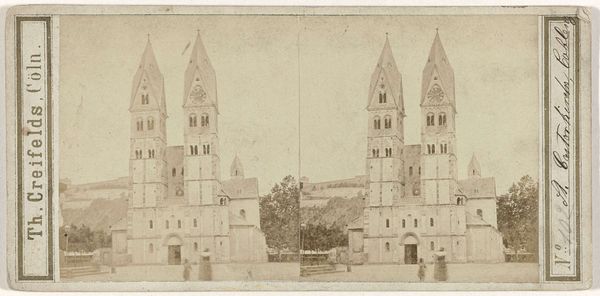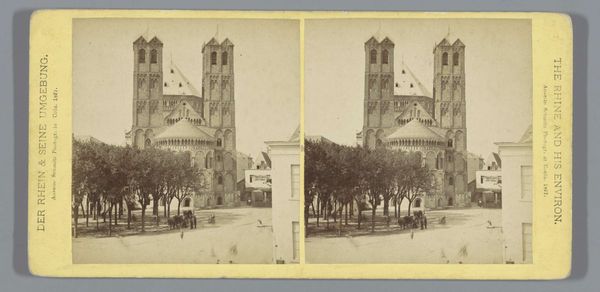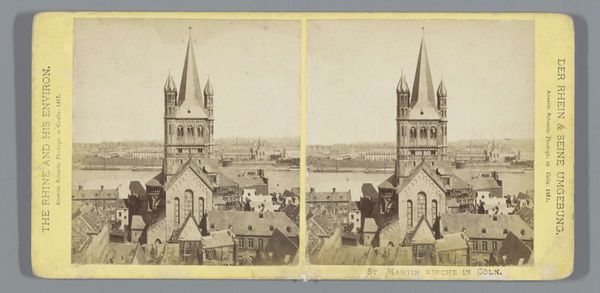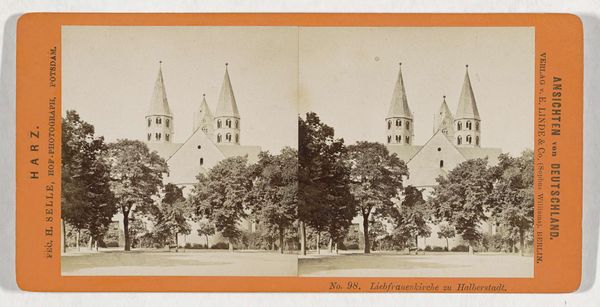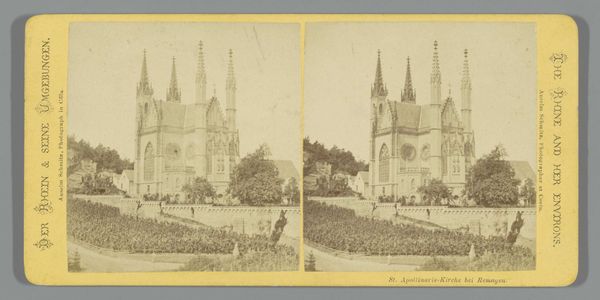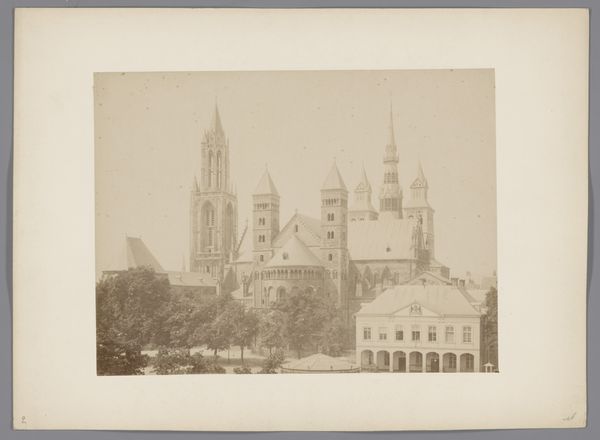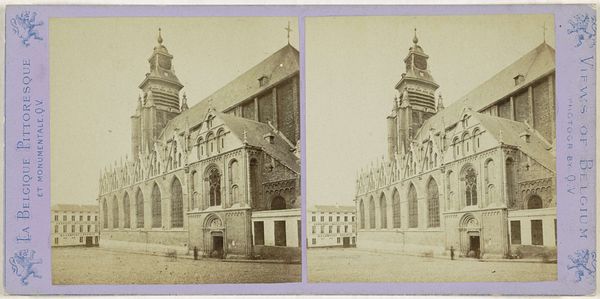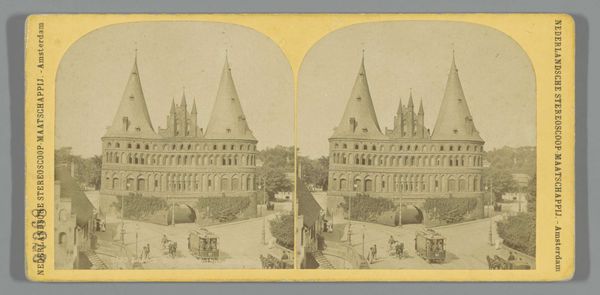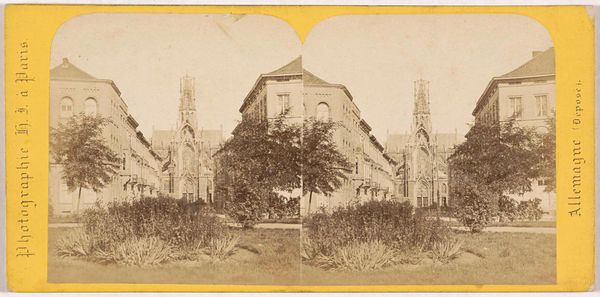
Dimensions: height 85 mm, width 176 mm
Copyright: Rijks Museum: Open Domain
Curator: Welcome! Here we have a gelatin-silver print from between 1859 and 1875 by Theodor Creifelds, titled "Maria Hemelvaartkerk in Andernach, Duitsland"—or, in English, the Church of the Assumption of Mary in Andernach, Germany. Editor: It feels...staged, somehow? Like a play set, especially with the way the trees are almost formally arranged. There's a stillness, an almost theatrical silence about the whole thing. What do you make of the romantic sensibility in photography? Curator: The romantic movement certainly influenced the early days of photography, but through social documentation as photography became a tool for civic engagement. These early cityscapes often depicted public buildings like the Church for purposes of municipal and political power. Editor: So the staging I’m picking up on could be less artistic and more...official propaganda? I’m getting this weird, grand-yet-clinical vibe. There is an intent for the viewer to feel somewhat imposed upon. Curator: Exactly. Think about the moment in history; new technologies are rapidly changing society. This type of image presents a carefully constructed reality: order, stability, perhaps even a deliberate effort to project the Church as an unchanging bedrock in times of immense social flux. The photographer uses specific optics. Editor: What specific optical techniques did he employ? Curator: To construct his work, Creifelds uses techniques such as composition, light exposure and photo editing. Through precise control he's shaping how society saw the place of religion and the power of city institutions within German life. It is to emphasize certain narratives, rather than simple representation. Editor: Right! Now I can't unsee it. That initial, somewhat eerie feeling of the scene has intensified into a profound unease about what the image does, not what it shows. It goes far deeper than surface appearances, more than landscape views. It's history carefully curating a place for itself. Curator: Yes, it’s an orchestrated performance. By revealing this, photographs are more than artifacts. This is why, when discussing artworks from the past, it’s not just about what is visually there, but rather who is empowered to see it, and who are omitted from seeing. Editor: Profound stuff. Makes you think about every snapshot and filtered post, doesn’t it? It all screams: Look closely and be careful how you view the truth, when presented to you. Curator: Indeed, an excellent summation of the importance of historical views in our modern landscape! Thank you for taking this historical tour of "Maria Hemelvaartkerk in Andernach, Duitsland".
Comments
No comments
Be the first to comment and join the conversation on the ultimate creative platform.

